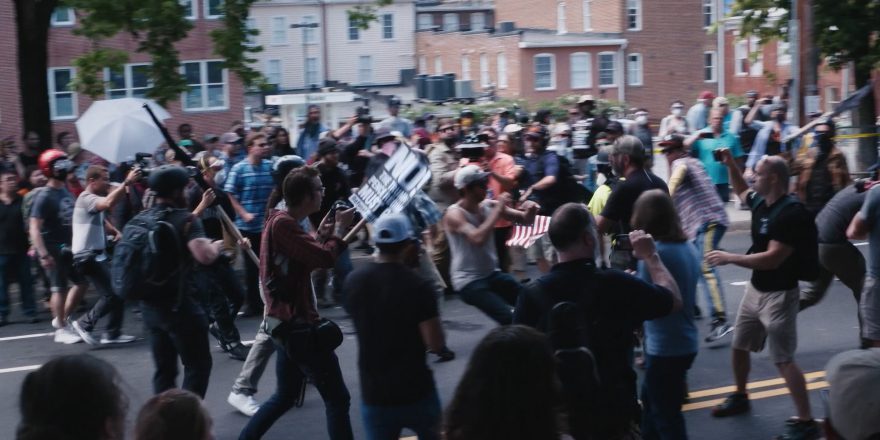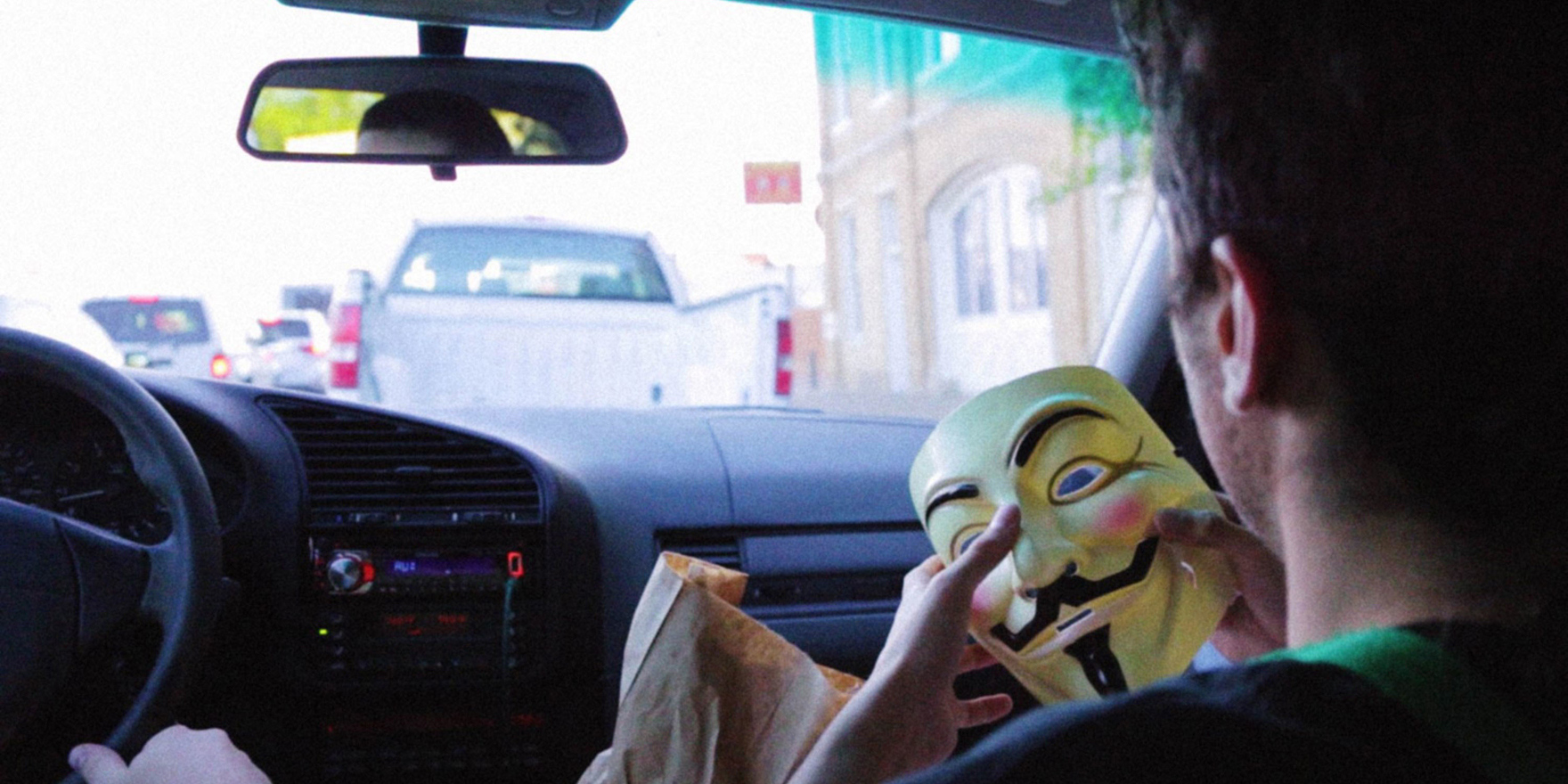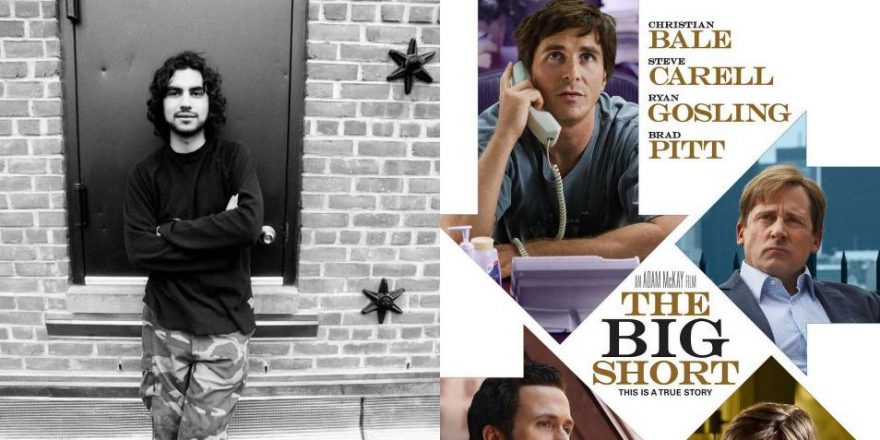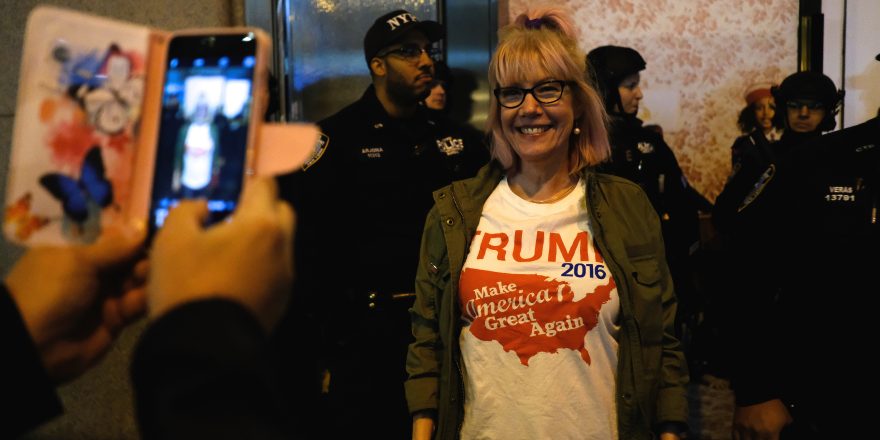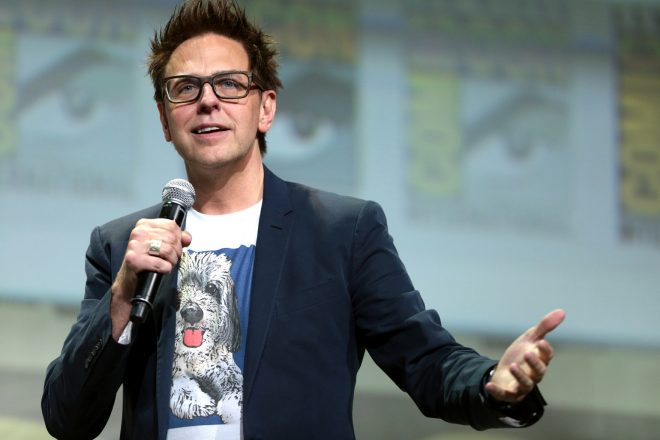I was hesitant at first to write this article because I don’t think of myself as a guy with answers. I’m not a guru or a moralist; that’s my dad’s territory (he was a Methodist minister for 30 years). Nor am I a pundit or a prophet. To use a war analogy, I’m just the guy in the trenches with the camera, dodging bullets and sending the footage back home. In the case of Alt-Right: Age of Rage, my film about the conflicts between white nationalists and anti-fascist protesters (Antifa), this analogy is more apt than usual. In any case, my goal as a documentarian is to put what I have observed on film, and to let other smarter people figure out what it all means.
I agreed to write this piece, however, because people are so conflicted about what’s going on in our country right now, so angry and in need answers, that if I can be of any help at all, it’s certainly worth the effort.
So, one year on from the Charlottesville tragedy, here are the lessons I learned from making Alt-Right: Age of Rage:
1. Globalism and neoliberalism won’t fix the world’s problems and are on their way out
Here’s where the far right and far left actually come together. This idea that globalism is going to “heal the world” is actually doing more harm than good. The rise of nationalism and socialism are no mistake. Young people are abandoning the political ideals of previous generations. The new message is the old adage “think globally, act locally.” Focus on cleaning up your own house, your own self, and then branch out from there. Fix your block. Fix your neighborhood. Then your county. Then your city. You can glean this message both in alt-right and Antifa rhetoric.
2. Genocide talk is real
No one in the alt-right would admit to me on camera that they openly discuss the genocide of people who aren’t white as a “final solution,” but they do. I heard it time and time again while on location at rallies and white-power conferences and researching this film, mostly from members of the alt-right but also from normal libertarians behind closed doors. The conversation usually goes something like this –
Them: This planet is running out of resources.
Me: True.
Them: We’re headed for another major economic crisis, a major collapse of the banking system, a massive hack where everyone loses all their money at once, etc.
Me: Possible.
Them: There will be more ecological disasters. Wildfires, earthquakes, floods, it’s only going to get worse.
Me: Yes, definitely.
Them: The Third World is coming for us and we’re not going to stop them. Look at Europe. They’re totally fucked. It’s only a matter of time before they come here.
Me: Agreed.
Them: Genocide is a natural answer to these problems, whether you want to admit it or not.
Me: Wait, what?
Them: It is the simplest solution. There are too many poor people on this planet to begin with. They are starving to death, better to put them out of their misery. And anyway, I’m not letting them come and take the jobs, land and resources rightfully owed to my kids and grandkids. Genocide is a practical solution and anyone who thinks that is “wrong” or “evil” is not thinking practically, they’re just stuck in “muh feelings.”
The conversation with Antifa starts out very much the same way, but ends quite differently. They see the same problems, but think that a massive redistribution of wealth is the answer to these problems. We have plenty of resources already. They’re just being hoarded by the 1 percent. By people like Jeff Bezos, who is currently worth $150 billion. They’re not going to share, so we must forcefully take that money and redistribute it to the rest of society.
The truth is we do have the resources to give everyone a decent existence. It does not mean, however, we have to let everyone into our country all at once, but it does mean we can’t let the rich keep getting richer at the expense of all others.

3. The Right is currently winning the free-speech battle
The alt-right successfully weaponized the free-speech argument in 2017. On college campuses and street protests across the country, they were able to use some sort of mental jujitsu to make it appear as though they are the protectors of free speech in America, defending it from the evil Democrats and Antifa, who use censorship and deplatforming to shut anyone up who disagrees with them or is espousing a controversial viewpoint on the Right. This is a complete role reversal from the ’60s and ’70s, when women, minorities and trade unions were censored and deplatformed by the Right and found themselves fighting for their free speech on the streets and in the courts. Time and time again I witnessed alt-right members at protests using the same slogans the Left once used and wielding the same moral activism they once poked fun at. There’s a lot of talk on the Left now about curtailing free speech, but we must not forget that will set a bad precedent for the future when the Left takes back institutional and governmental power in this country. If free speech is abridged in this country, those most affected will be those least privileged – undocumented immigrants, migrant workers, prisoners, etc. We must think of the long game.
The Right is also winning the free-speech battle in the courts. The Supreme Court has followed suit with landmark conservative Free Speech decisions, including Becerra and Masterpiece Cakes. Sixty-five percent of free-speech cases in the Roberts court are about conservative speech. This is contrasted by 8 percent in the Warren court (1953-1969). As the court moves further right, we’re certain to see more of the same over the next decades.
Silicon Valley has also jumped into the free-speech game with Alex Jones being banned by Apple, YouTube, Facebook and Spotify all in the same week. The alt-right’s answer, shockingly, is that the government should declare these platforms “public utilities.” That way, they can guarantee free speech, even for hate speech delivered on these platforms. As private corporations, these platforms are just not beholden to the Constitution. So, the Right is saying, let the feds decide. Ironic that this solution is blatantly taking a page out of the socialist playbook the alt-right so despise.
4. Violence against the alt-right is working
This is a disappointing truth to me personally, because I was raised by activist parents who passionately believed in nonviolent resistance. What I’ve seen over the past year, however, and what my movie unfortunately shows, is that violence against the alt-right is effective. We saw this in Gainesville, Florida, and then again in East Lansing, Michigan, where Richard Spencer was nearly prevented from speaking and his many of his supporters were beaten and bloodied. We saw it again this past weekend in Portland. When Antifa organizes en masse and outnumbers the alt-right and then physically attacks them, they are able to effectively shut down these events and scare off new recruits from joining the alt-right. In 2018, we’ve seen far fewer protests and demonstrations because of this. But the protests we’ve seen are far more intense and violent than in the past, and that is a trend which definitely will be accelerating over the next few years of Trump’s presidency. Whether this success is superficial or is truly preventing racist ideologies from spreading remains to be seen. From the perspective of Antifa leaders, however, their goals are being achieved.
5. ISIS and the alt-right are two sides of the same coin
This isn’t just a problem with “angry young white men.” A large population of young men are toiling in poor communities across the globe, isolated from those with wealth, status and power (yet connected to and witnessing the display of all three on the internet and social media, constantly). These men have lost their identity. They blame their own personal failure on external factors, denying personal responsibility. At the same time, they’re being told that they have the ability to live the American dream if they just work hard enough, pay their taxes and obey the law. We all know that’s a lie. These young men no longer have access to that dream. Very few do anymore. White men once did back in the ’50s and earlier, when they were all but guaranteed a seat at the table, but that’s just not the case anymore. So they’ve engaged in a reassignment of the pain that accompanies a sense of one’s own inferiority onto external scapegoats. For the alt-right, those scapegoats are illegal immigrants, women, P.O.C., Jews, etc. For ISIS, they are America and the West. These often depressed and anxiety-ridden young men don’t feel they have anything to live for. So they lash out by engaging in hate on the internet and the streets or suicide bombing in the Middle East. Nietzsche said, “Any assertion of the will is life-affirming.” This is their way of asserting their will and, for once, feeling alive.
People ask, what’s the final message of Alt-Right: Age of Rage? To me, it’s this: One part of our country believes we can no longer live together peacefully, that we’re headed for disaster and will ultimately break apart. The other part of the U.S. believes everything is going to be all right. Who’s right and who’s wrong? I wish I had the answer for that. Only time will tell.



